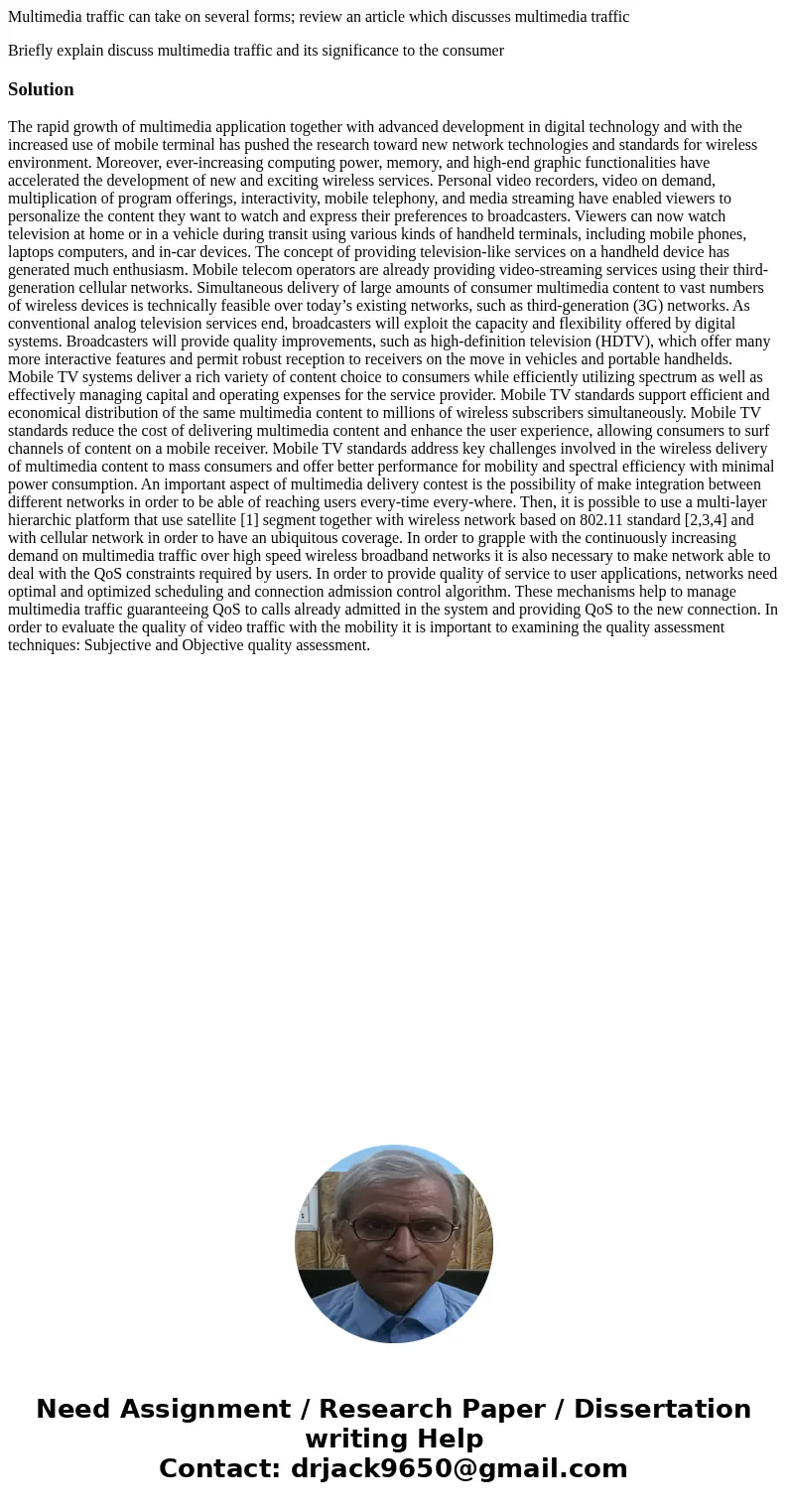Multimedia traffic can take on several forms review an artic
Multimedia traffic can take on several forms; review an article which discusses multimedia traffic
Briefly explain discuss multimedia traffic and its significance to the consumer
Solution
The rapid growth of multimedia application together with advanced development in digital technology and with the increased use of mobile terminal has pushed the research toward new network technologies and standards for wireless environment. Moreover, ever-increasing computing power, memory, and high-end graphic functionalities have accelerated the development of new and exciting wireless services. Personal video recorders, video on demand, multiplication of program offerings, interactivity, mobile telephony, and media streaming have enabled viewers to personalize the content they want to watch and express their preferences to broadcasters. Viewers can now watch television at home or in a vehicle during transit using various kinds of handheld terminals, including mobile phones, laptops computers, and in-car devices. The concept of providing television-like services on a handheld device has generated much enthusiasm. Mobile telecom operators are already providing video-streaming services using their third-generation cellular networks. Simultaneous delivery of large amounts of consumer multimedia content to vast numbers of wireless devices is technically feasible over today’s existing networks, such as third-generation (3G) networks. As conventional analog television services end, broadcasters will exploit the capacity and flexibility offered by digital systems. Broadcasters will provide quality improvements, such as high-definition television (HDTV), which offer many more interactive features and permit robust reception to receivers on the move in vehicles and portable handhelds. Mobile TV systems deliver a rich variety of content choice to consumers while efficiently utilizing spectrum as well as effectively managing capital and operating expenses for the service provider. Mobile TV standards support efficient and economical distribution of the same multimedia content to millions of wireless subscribers simultaneously. Mobile TV standards reduce the cost of delivering multimedia content and enhance the user experience, allowing consumers to surf channels of content on a mobile receiver. Mobile TV standards address key challenges involved in the wireless delivery of multimedia content to mass consumers and offer better performance for mobility and spectral efficiency with minimal power consumption. An important aspect of multimedia delivery contest is the possibility of make integration between different networks in order to be able of reaching users every-time every-where. Then, it is possible to use a multi-layer hierarchic platform that use satellite [1] segment together with wireless network based on 802.11 standard [2,3,4] and with cellular network in order to have an ubiquitous coverage. In order to grapple with the continuously increasing demand on multimedia traffic over high speed wireless broadband networks it is also necessary to make network able to deal with the QoS constraints required by users. In order to provide quality of service to user applications, networks need optimal and optimized scheduling and connection admission control algorithm. These mechanisms help to manage multimedia traffic guaranteeing QoS to calls already admitted in the system and providing QoS to the new connection. In order to evaluate the quality of video traffic with the mobility it is important to examining the quality assessment techniques: Subjective and Objective quality assessment.

 Homework Sourse
Homework Sourse